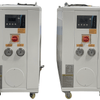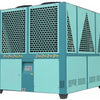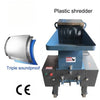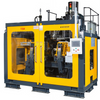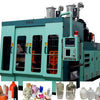Industrial water-cooled chiller
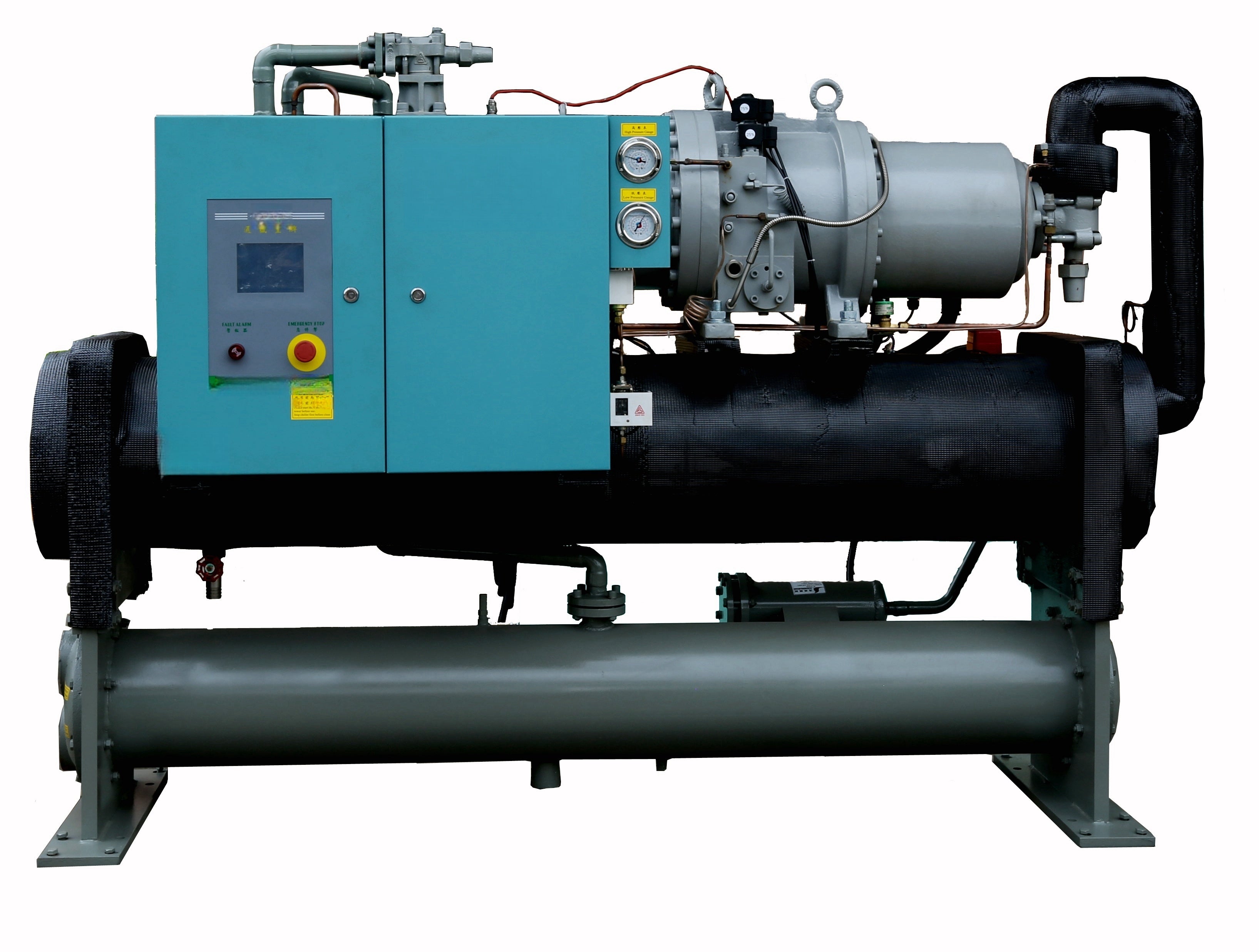
1. Introduction
The demand for precise and reliable cooling is paramount in modern industry and large commercial facilities. From ensuring the dimensional accuracy of plastic parts to preventing overheating in data centers and maintaining comfortable environments in skyscrapers, controlled cooling is not a luxury but a necessity. Among the various cooling solutions available, water-cooled chillers have established themselves as the preferred choice for medium to large-capacity applications where operational efficiency, stability, and long-term reliability are critical. Unlike air-cooled chillers that reject heat directly to the ambient air, water-cooled systems transfer waste heat to a cooling tower via a water loop, a method that offers significant thermodynamic advantages. This paper aims to provide a comprehensive overview of water-cooled chiller technology, its operational mechanics, benefits, and its pivotal role in contemporary industrial and commercial processes.
2. Operating Principle
The operation of a water-cooled chiller is based on the fundamental vapor-compression refrigeration cycle, which consists of four primary components: the evaporator, the compressor, the condenser, and the expansion device.
- Evaporation: The cycle begins in the evaporator, where a liquid refrigerant absorbs heat from the process water (or other fluid) that needs to be cooled. This heat absorption causes the refrigerant to boil and turn into a low-pressure, low-temperature vapor.
- Compression: The gaseous refrigerant is then drawn into the compressor. Here, its pressure and temperature are significantly increased, transforming it into a high-pressure, high-temperature vapor. Common compressor types include reciprocating, centrifugal, and increasingly, screw compressors.
- Condensation: The hot, pressurized vapor enters the condenser. In a water-cooled chiller, this heat is transferred to a separate stream of condenser water, which is subsequently pumped to a cooling tower where the heat is finally rejected to the atmosphere. As the refrigerant loses heat, it condenses back into a high-pressure liquid.
- Expansion: The high-pressure liquid refrigerant passes through an expansion device (e.g., a thermal expansion valve or electronic expansion valve). This device causes a sudden drop in pressure, which also lowers the refrigerant's temperature, preparing it to re-enter the evaporator and absorb more heat, thus completing the cycle.
This continuous循环 (xúnhuán, cycle) effectively moves heat from the process being cooled to the external environment.
3. Key Advantages of Water-Cooled Chillers
Water-cooled chillers offer several compelling advantages over alternative cooling methods:
- Higher Efficiency: Water has a higher heat capacity than air, allowing it to absorb and carry away more heat per unit volume. This results in a more efficient heat rejection process, leading to lower energy consumption, especially under high ambient temperatures or heavy loads. Models like the Carrier 23XRV, featuring variable frequency drives (VFDs) and triple-rotor screw compressors, achieve exceptional Integrated Part Load Value (IPLV) ratings, demonstrating high efficiency across varying operational conditions.
- Enhanced Stability and Reliability: Performance is less susceptible to fluctuations in outdoor air temperature. This stability is crucial for processes requiring consistent cooling, such as chemical reactions or精密 (jīngmì, precision) manufacturing. Features like dual-circuit design (as seen in the Carrier 30HXC) further enhance reliability.
- Lower Noise Levels: Since the primary heat rejection occurs at a remote cooling tower, the chiller unit itself operates more quietly than an air-cooled unit, which must use large, noisy fans. This is beneficial for installations in noise-sensitive environments.
- Longer Lifespan: The more stable operating conditions and reduced thermal stress on components often contribute to a longer operational life for water-cooled systems.
4. Compressor Technology: The Rise of Screw Compressors
While various compressor types are used, screw compressors have become dominant in many water-cooled chiller applications due to their unique benefits:
- Smooth and Continuous Operation: Screw compressors provide a steady flow of refrigerant without the pulsations associated with reciprocating compressors. This leads to smoother operation, reduced vibration, and less wear and tear.
- High Efficiency and Low Energy Consumption: Their design allows for high volumetric efficiency and lower energy use, particularly at partial loads when paired with VFDs.
- Durability and Low Maintenance: With fewer moving parts than reciprocating compressors, screw compressors are known for their robustness and require less frequent maintenance. They are also less prone to issues caused by frequent start-stop cycles.
- Capacity Control: Screw compressors can be easily modulated (e.g., via slide valves or VFDs) to match the cooling load precisely, further enhancing energy efficiency.
Manufacturers like Carrier leverage this technology in models such as the 30HXC and 23XRV, combining it with满液式 (mǎn yè shì, flooded-type) evaporators and condensers for optimal heat transfer.
5. Applications Across Industries
The versatility of water-cooled chillers makes them indispensable in numerous sectors:
- Plastics Industry: Critical for controlling mold temperatures during injection molding and extrusion, ensuring product quality, dimensional accuracy, and faster cycle times.
- Electronics Manufacturing: Used to cool精密 (jīngmì, precision) electronic components, laser equipment, and machinery to prevent overheating and ensure consistent performance.
- Chemical and Pharmaceutical Processing: Essential for controlling the temperature of chemical reactions, crystallization, and distillation processes to ensure safety, yield, and product purity.
- Commercial HVAC: The backbone of central air conditioning systems in large buildings such as hotels, office towers, hospitals, and schools (e.g., Carrier 30HXC). They provide the chilled water circulated through air handling units to cool occupied spaces.
- Food and Beverage Processing: Used for cooling processes, storage, and packaging to maintain product quality and safety.
6. Trends: Intelligence and Sustainability
Modern water-cooled chillers are evolving rapidly, driven by demands for greater efficiency and ease of management:
- Intelligent Control Systems: Advanced微处理器 (wēi chǔlǐ qì, microprocessor)-based controllers enable real-time monitoring, automatic adjustment of cooling capacity based on load, remote diagnostics, and integration into building management systems (e.g., Carrier's CCN network). This智能化 (zhìnéng huà, intelligentization) reduces the need for specialized operational expertise and optimizes performance.
- Environmental Responsibility: There is a strong industry shift towards using environmentally responsible refrigerants with zero Ozone Depletion Potential (ODP), such as HFC-134a (used in Carrier 30HXC/23XRV) and newer, lower Global Warming Potential (GWP) alternatives. The focus on high energy efficiency also contributes to a reduced carbon footprint.
- Compact Design and Ease of Installation: Manufacturers are engineering units with smaller footprints (e.g., ~1.0 meter width for 30HXC) and modular components to simplify installation in space-constrained mechanical rooms.
7. Conclusion
Water-cooled chillers remain a cornerstone of efficient thermal management for demanding industrial and commercial applications. Their superior efficiency, operational stability, and quiet performance make them the optimal solution for large-scale, continuous cooling needs. The adoption of advanced technologies, particularly screw compressors and intelligent control systems, has further solidified their position by enhancing reliability, reducing energy consumption, and simplifying operation. As industries continue to prioritize productivity, precision, and environmental sustainability, the water-cooled chiller, with its proven performance and ongoing innovation, will undoubtedly continue to be a vital and reliable partner in global manufacturing and comfort cooling.
8. References
- Carrier Building Solutions China. (n.d.). 30HXC Water-Cooled Screw Chiller. Retrieved from Carrier official website.
- Carrier Building Solutions China. (n.d.). 23XRV High-Efficiency, Water-Cooled, Variable Frequency Screw Chiller. Retrieved from Carrier official website.
- Kassel Machinery (Zhejiang) Co., Ltd. (n.d.). Water-Cooled Chillers: Efficient Cooling Industrial Partners. Technical Article.
- Kassel Machinery (Zhejiang) Co., Ltd. (n.d.). Screw Water-Cooled Chillers—Providing Reliable Solutions for Industrial Cooling. Technical Article.
- Baidu Baike. (n.d.). Water-Cooled Chiller. Retrieved from Baidu Encyclopedia.
- Shanghai Jiao Tong University. (2025, June 16). Design and Implementation of Intelligent Control System for Central Air Conditioning. CNKI.
-
Posted in
Plastic crusher

